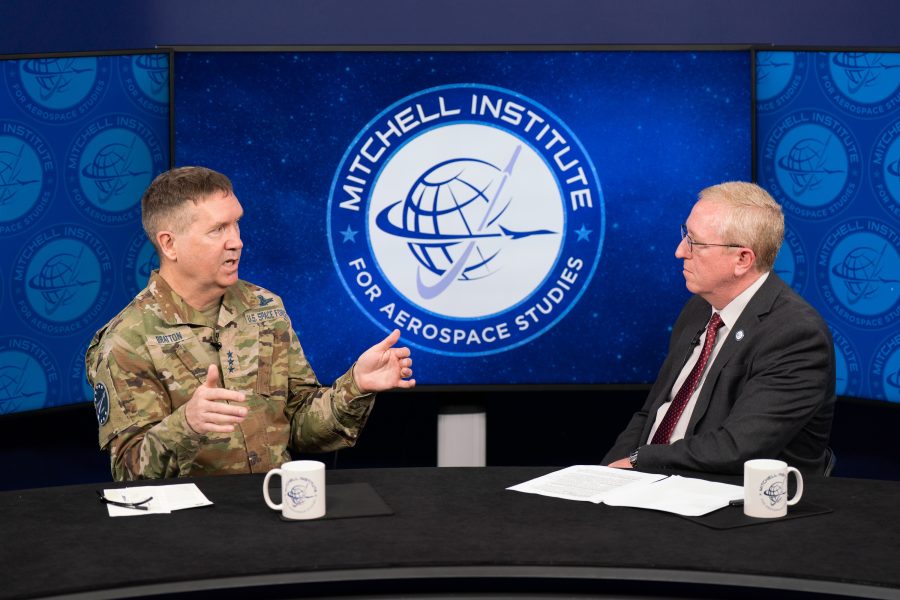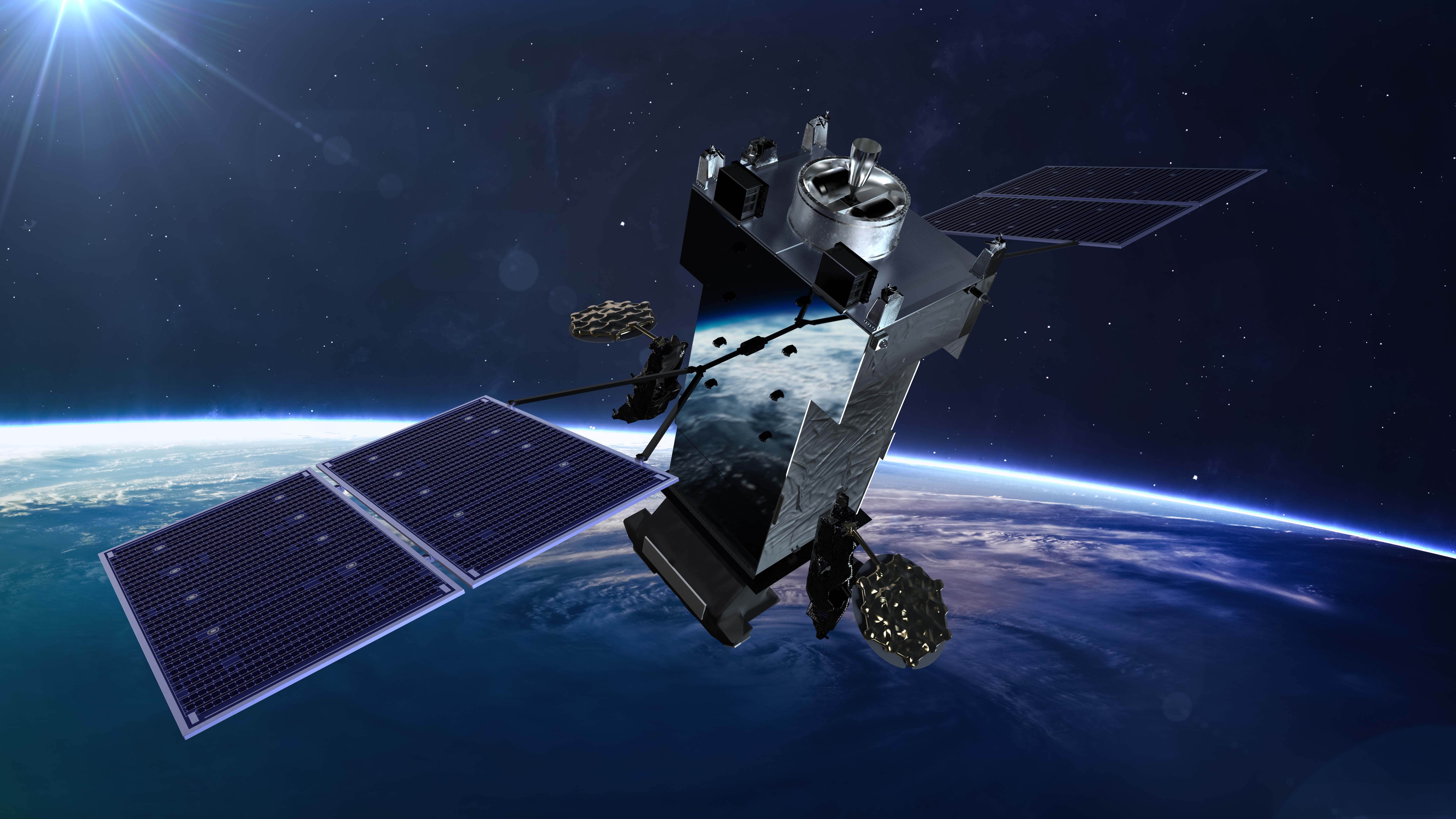
The projected “Golden Dome” missile defense system could push the U.S. military to broaden its thinking on how to support space operations, the Space Force’s top planner said May 15.
“We need to think about terrestrial fires and demand signal,” Lt. Gen. Shawn N. Bratton, the deputy Chief of Space Operations for strategy, plans, programs, and requirements, said during an event hosted by AFA’s Mitchell Institute for Aerospace Studies. “If a B-21 can drop a bomb on a space target that the adversary has in the terrestrial realm, I think planners should account for that.”
He said the requirements for the Golden Dome, which calls for space-based missile interceptors, as opposed to relying entirely on ground-based systems that intercept missiles in space, should make the U.S. military think more holistically about how it accomplishes objectives.
“Golden Dome does open a new area as we think about this boost-phase intercept from space,” Bratton said. “I don’t think we’re going further than that at this time on thinking about any specific capabilities, but it really is just to remind planners, don’t lock yourself into just the space domain. Sometimes the best way to solve that threat or defeat the threat that you’re facing within the space domain is to solve that problem in the terrestrial domain.”
The service last month rolled out its Space Warfighting guide, which it calls a “framwork for planners” that Bratton said was aimed at ensuring current Guardians understand their service’s military mission as the Space Force increasingly moves towards more blunt rhetoric that acknowledges warfare may occur in space, and warns of more aggressive actions taken by adversaries such as China or Russia.
“We must be prepared to employ capabilities for offensive and defensive purposes,” Chief of Space Operations Gen. B. Chance Saltzman wrote in the forward of the document. The Space Force has now made clear its primary mission is “space superiority” to allow the U.S. military to operate in space, much like the Air Force relies on air superiority to take out targets or allow other forces to accomplish a mission.
“This is the normalization of the language and showing the joint force that, hey, really warfare in space isn’t that different than warfare in other domains,” Bratton said. “There’s not a big mystery behind all this. We’re a warfighting organization, just like the other services are, and here’s how we do our business.”
Golden Dome calls for interceptors to shoot down missiles from space. While Bratton did not suggest that the Space Force plans to develop an ability to attack ground targets directly with interceptors, he left open the possibility that the technology required to field a space-based interception capability could be used in other ways.
“We were directed to look exactly at that: ‘Boost-phase intercept from space.’ By definition of those words, is, ‘Hey, I am on orbit, and I’m going to re-enter and impact during the boost phase, which is suborbital,” Bratton said. “Some of the work that we’ve done in the space superiority area, Golden Dome will benefit from, and I think space superiority will benefit from the future work on Golden Dome.”
Space-based interceptors are perhaps Golden Dome’s most vexing requirement, as the technology currently does not exist. But for the Space Force, it “puts us front and center,” Bratton said, and opens the door for the service to have the Golden Dome become complementary to its broader mission.
The Space Force is committed to “develop that capability and go field it,” he said of space-based interceptors.
“The technology to do that, we’ll be able to use that in other areas. … That’s a tough problem to solve, but we’re going to figure it out,” he continued. “There is some overlap, and I think we’ll benefit from Golden Dome.”
But the future of the Space Force doesn’t all rely on new space-based cutting-edge technology to take out objects, he said.
“We don’t always have to use space to solve a space problem,” Bratton said. “Just like we help the joint force solve their problems as part of them, we need to rely on them, and that’s okay. … Here’s what we need from the Air Force, the Navy, the Army, and the Marine Corps. We get a lot of demands from them, and so I think that’s a two-way street. And they are on board with that.”
The post How Golden Dome Will Help Create Space Superiority appeared first on Air & Space Forces Magazine.

Space, Charles Galbreath, Gen. B. Chance Saltzman, golden dome, Lt. Gen. Shawn Bratton, Mitchell Insitute for Aerospace Studies, space superiority, space warfighting
Air & Space Forces Magazine
Bitcoin
Ethereum
Monero

Donate Bitcoin to The Bitstream
Scan the QR code or copy the address below into your wallet to send some Bitcoin to The Bitstream

Donate Ethereum to The Bitstream
Scan the QR code or copy the address below into your wallet to send some Ethereum to The Bitstream

Donate Monero to The Bitstream
Scan the QR code or copy the address below into your wallet to send some Monero to The Bitstream
Donate Via Wallets
Select a wallet to accept donation in ETH BNB BUSD etc..











